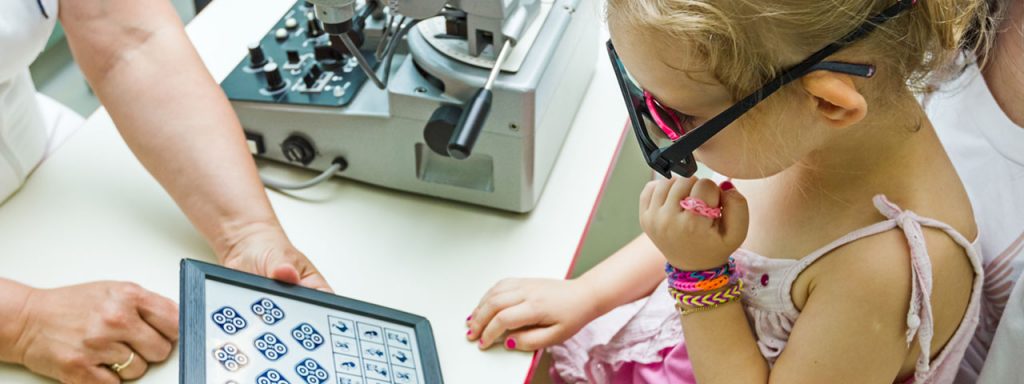Vision therapy and orthoptic therapy are sometimes confused with one another.
The information on this page includes everything you need to know about what makes these therapies similar, as well as how they are different.
Vision therapy is a treatment program that develops and strengthens the neural connections between the eyes and the brain, and enhances the performance of the visual skills.
Vision therapy is actually an outgrowth of orthoptics, which was introduced in the late 1800’s. However, while orthoptics focuses on the treatment of vision conditions related to eye coordination difficulties, vision therapy focuses on the treatment of a wider range of vision conditions.
A closer look at orthoptic therapy
Orthoptics by definition, is the straightening of the eyes. It is generally used to improve binocular vision affected by an eye turn (strabismus) or a lazy eye (amblyopia).
The main goal of orthoptic therapy is to strengthen the eye muscles and improve eye alignment. This type of therapy is limited to activities that focus on strengthening eye coordination, also known as binocular function.
A closer look at vision therapy
Vision therapy is a personalized treatment program designed to improve the visual skills by strengthening the connections between the eyes and the brain.
Vision therapy has been shown to effectively treat the following conditions:
- Convergence insufficiency
- Amblyopia (lazy eye)
- Strabismus (crossed-eyes)
- Double vision
- Eye fatigue
- Impaired eye teaming and eye tracking
- Impaired eye focusing
- Poor depth perception and 3D vision
- Poor eye-hand coordination
- Difficulties with visual perception and processing
Vision therapy has been shown to improve the following symptoms and behaviors:
- Headaches or fatigue after reading
- Double vision
- Lazy eye or eye turns
- Dizziness or motion sickness
- Poor hand-eye coordination
- Constant squinting/head tilting
- Using finger pointing when reading
- Poor posture when reading or writing
- Tendency to cover or close one eye
- Favoring the vision in one eye
- Difficulty following a moving target
While vision therapy may involve some degree of orthoptics, this is just one aspect of a vision therapy program.
The activities incorporated into a vision therapy program target the brain’s ability to coordinate eye movements and improve the processing of visual information.
SEE RELATED: Guide to Vision Therapy
Contact an eye doctor near you that can conduct eye exams to detect any underlying visual problems.
Who can benefit from vision therapy?
Parents and teachers should be on the lookout for the following red flags that may indicate a vision problem:
- Reading below grade level
- Reduced reading comprehension
- Loss of place, repetition, and / or omission of words while reading
- Confusing similar words, such as ‘was’ and ‘saw’
- Reversing letters such as b, d, p and q
- Spelling difficulties
- Dislikes or avoids homework
- Writing numbers backwards, such as 2 & 5 or 6 & 9
- Difficulty maintaining attention
- Difficulty changing focus from distance to near and back again
- Poor judgment of depth
- Messy handwriting
Vision therapy also makes use of optical lenses, prisms, filters, occluders and other specialized equipment aimed at developing the visual skills and strengthening the visual system.
In recent years, optometrists have included advanced technologies and computer-based games into their vision therapy programs, to make traditional vision therapy exercises even more fun and engaging.
LEARN MORE: Guide to Vision Therapy
To learn more about vision therapy and find out if vision therapy can help you, schedule an appointment with a developmental optometrist near you.


